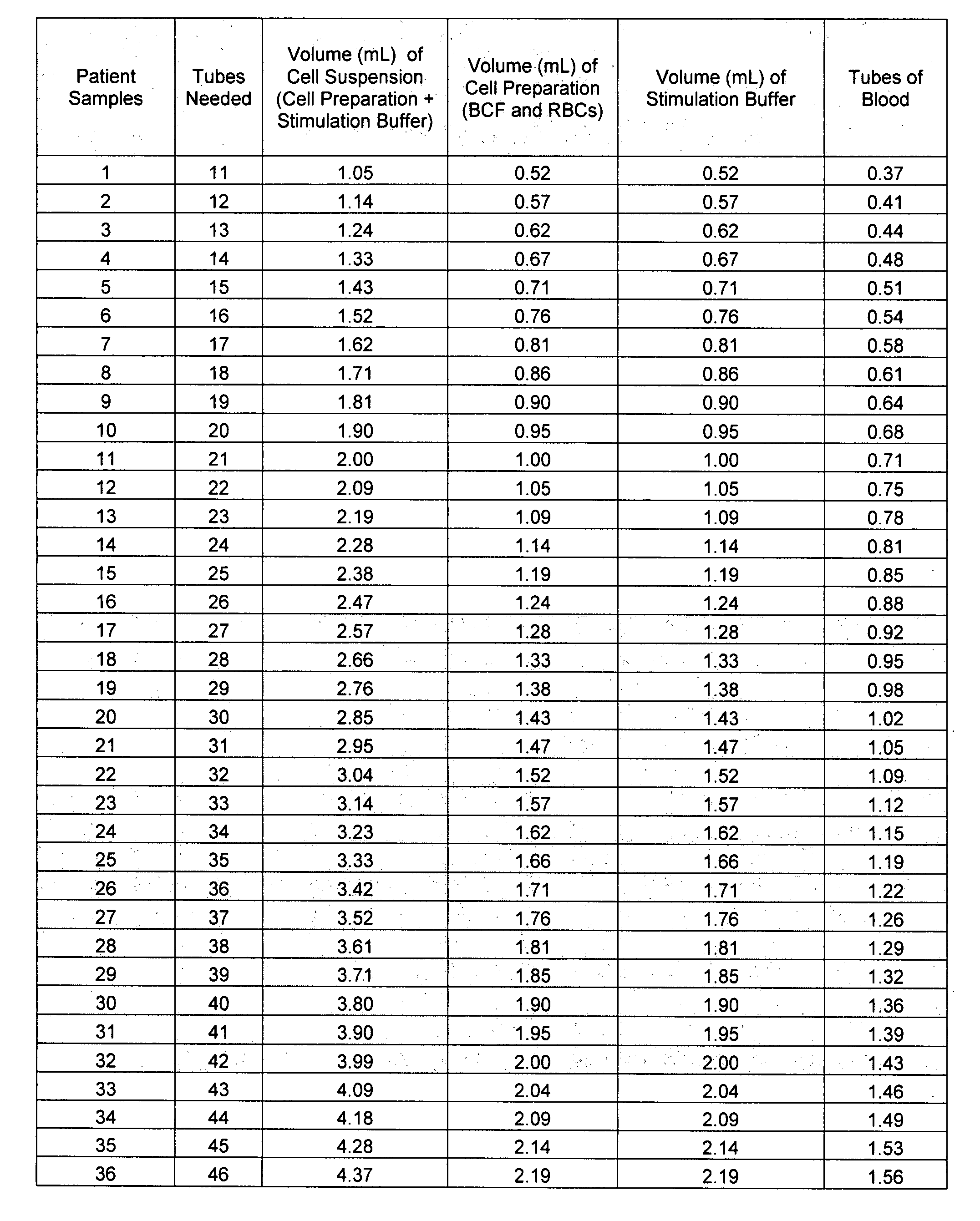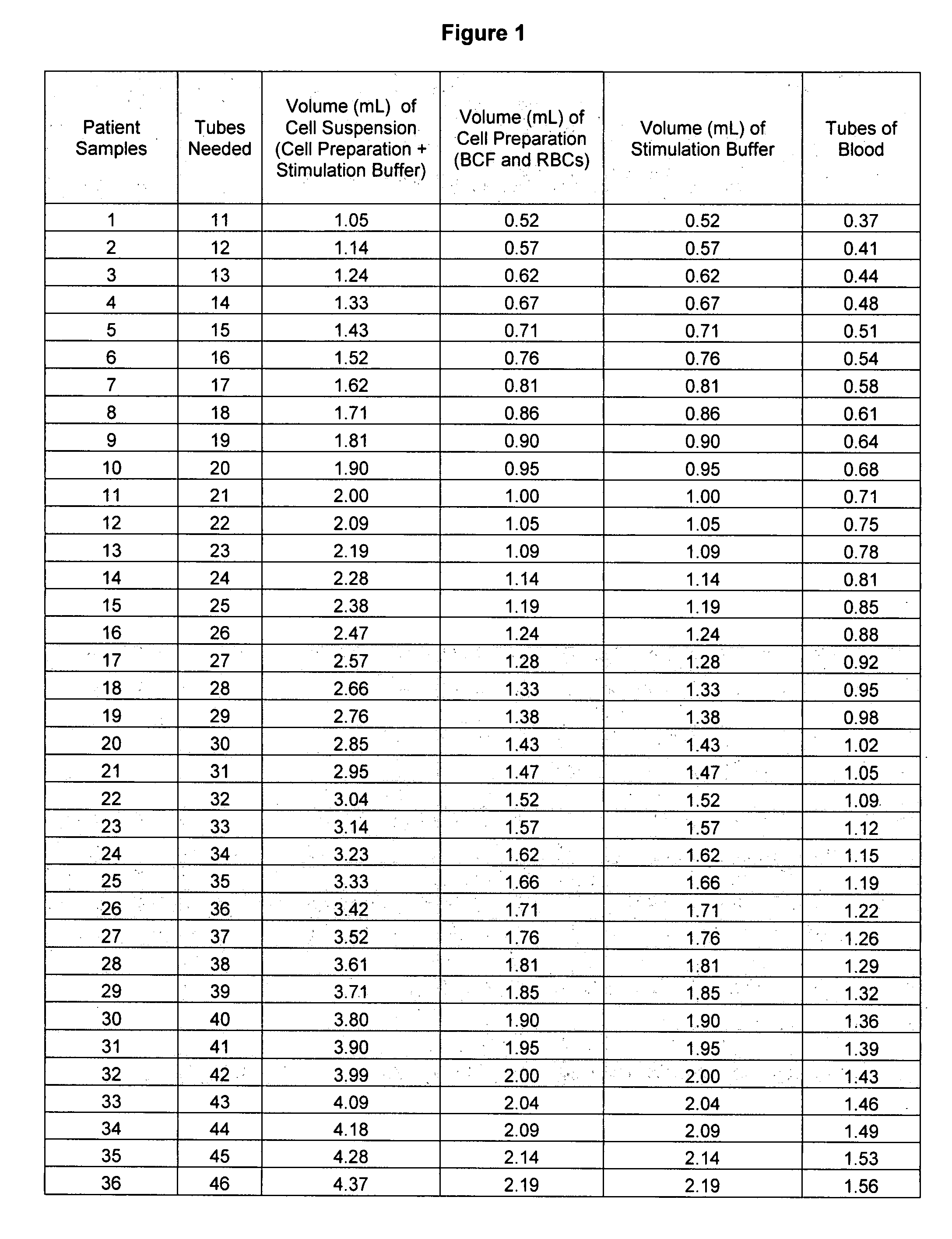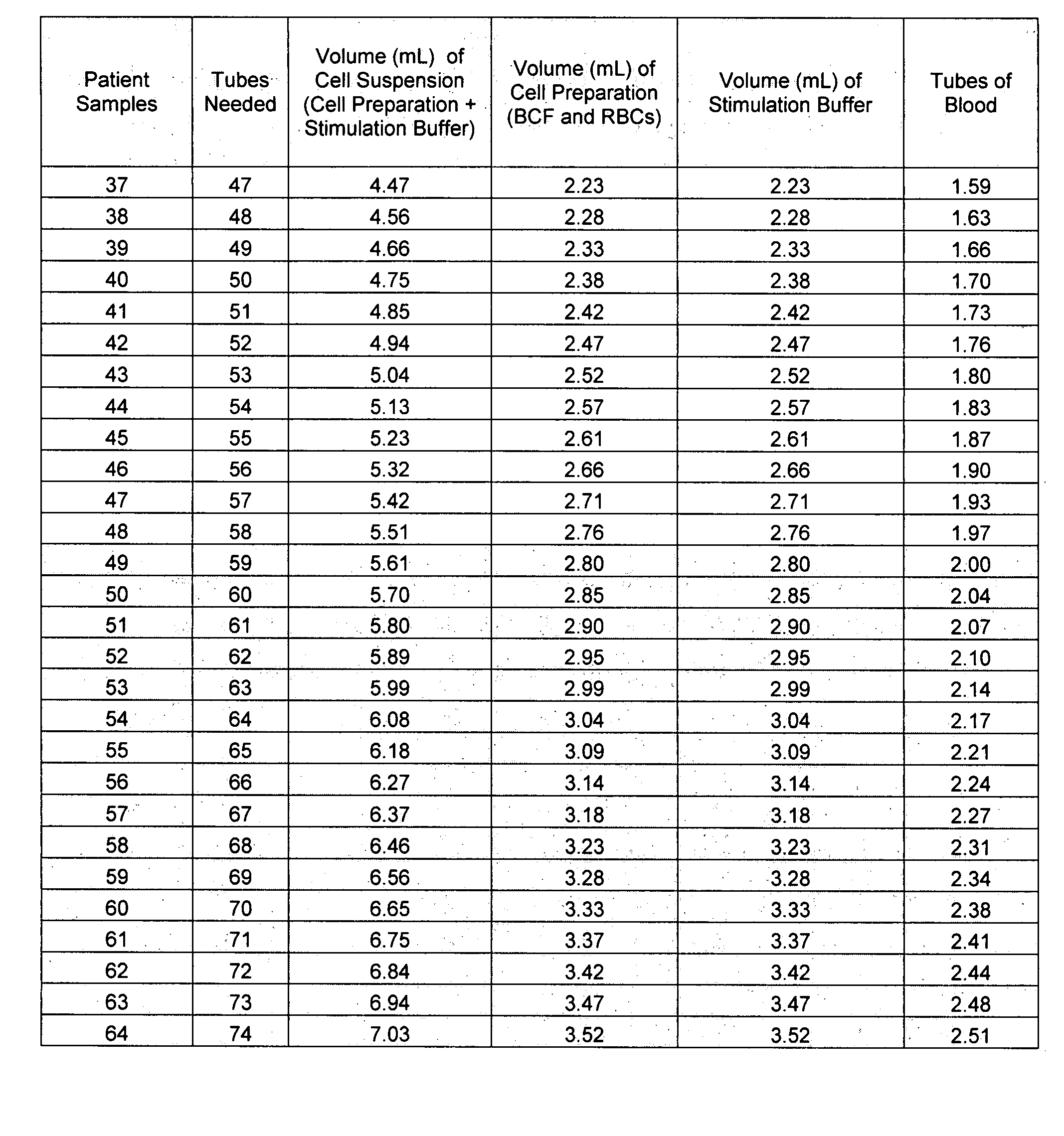Method for diagnosing auto-immune chronic urticaria
a technology for chronic urticaria and autoimmune disease, applied in the field of medical diagnostics, can solve the problems that drugs may not be useful in treating other forms of curing
- Summary
- Abstract
- Description
- Claims
- Application Information
AI Technical Summary
Benefits of technology
Problems solved by technology
Method used
Image
Examples
examples
[0021]Patient Serum Collection. A minimum volume of 1.0 mL of serum should be obtained from each patient. The blood from which the serum is to be prepared should be allowed to clot prior to centrifugation according to standard clinical laboratory practices for routine serological testing. The serum sample(s) may be shipped at ambient temperature, provided that if there is a delay in shipment, the sample must be frozen at −20° C. and shipped on ice packs. Hemolyzed serum samples may produce errant results and, as such, should be avoided to the extent possible.
[0022]Assay Procedure. The chart below indicates an approximate number of donor tubes of whole blood to draw, depending on the number of patients to be tested for auto-immune CU using the methods described herein.
Sodium Heparin DonorPatient SamplesTubes Collected (9 mL) 1-19120-48249-773 78-1064
[0023]The required number of stimulation buffer vials, containing IL-3, should be thawed to room temperature, along with 1 vial of anti-...
PUM
| Property | Measurement | Unit |
|---|---|---|
| Temperature | aaaaa | aaaaa |
| Volume | aaaaa | aaaaa |
| Volume | aaaaa | aaaaa |
Abstract
Description
Claims
Application Information
 Login to View More
Login to View More - R&D
- Intellectual Property
- Life Sciences
- Materials
- Tech Scout
- Unparalleled Data Quality
- Higher Quality Content
- 60% Fewer Hallucinations
Browse by: Latest US Patents, China's latest patents, Technical Efficacy Thesaurus, Application Domain, Technology Topic, Popular Technical Reports.
© 2025 PatSnap. All rights reserved.Legal|Privacy policy|Modern Slavery Act Transparency Statement|Sitemap|About US| Contact US: help@patsnap.com



